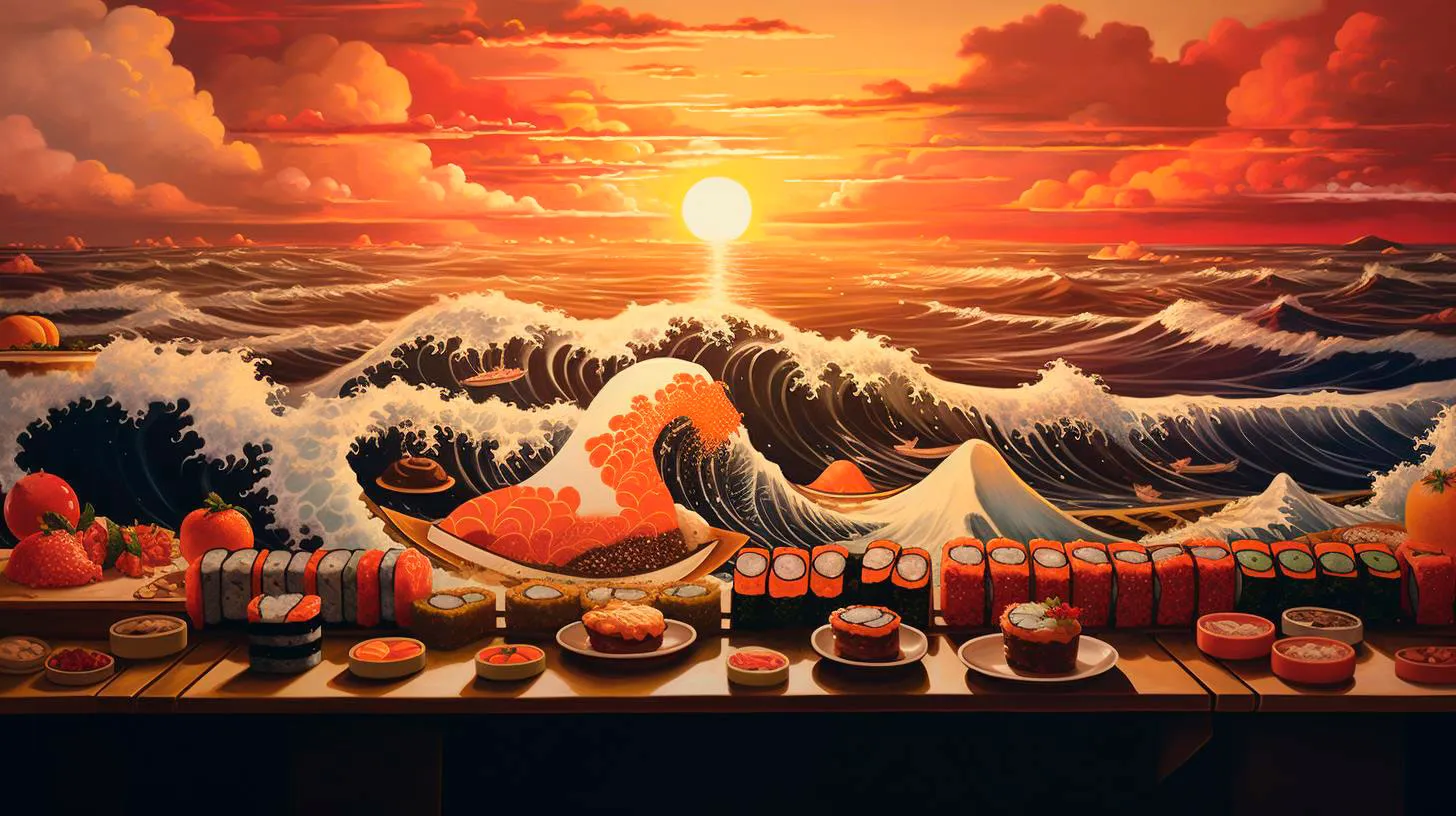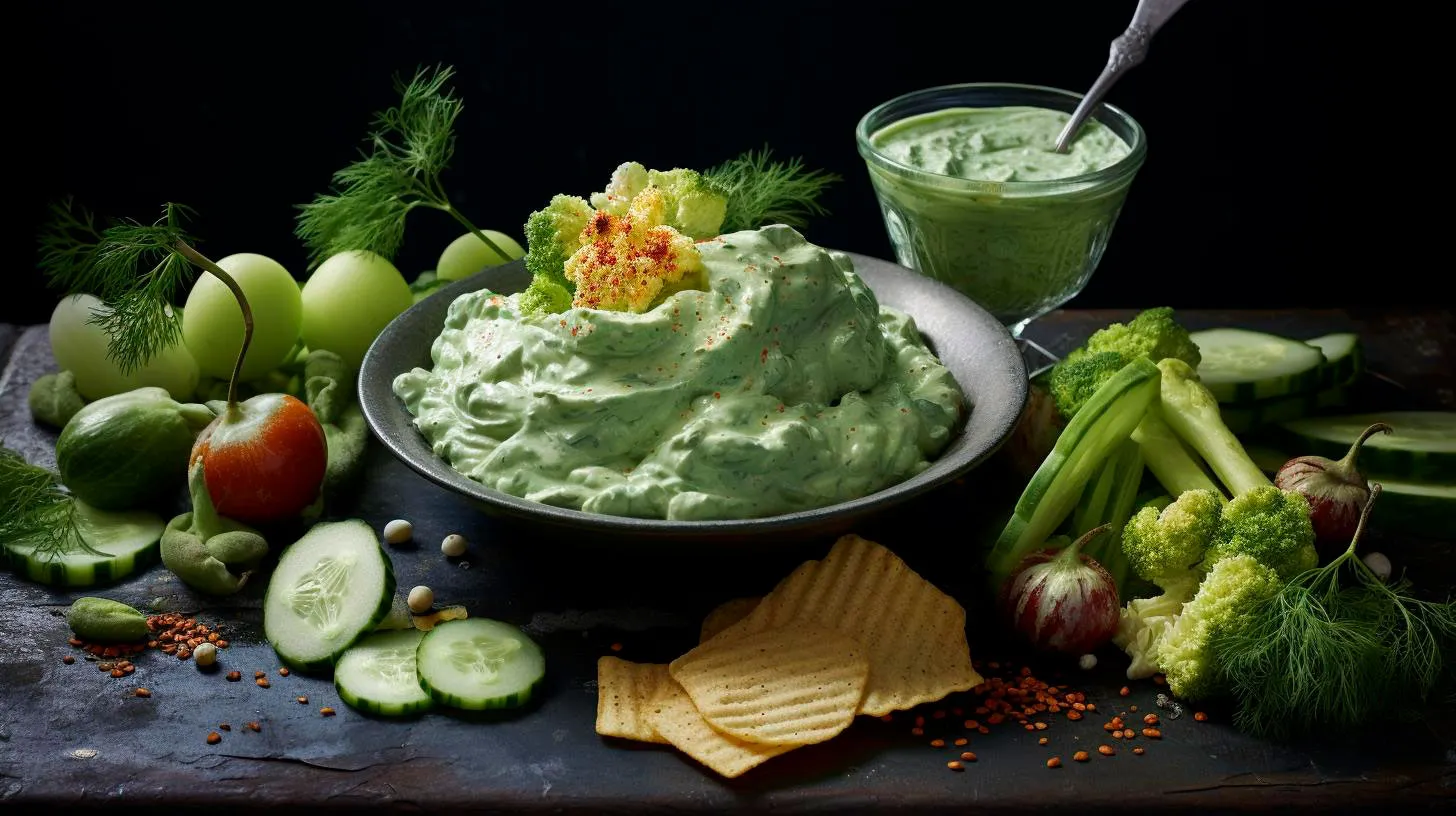Unveiling the Intricate Connection between Sushi Making and Ceramic Craftsmanship
In this article, we will explore the fascinating relationship between sushi making and ceramic craftsmanship, delving into their shared history, techniques, and the story behind their symbiotic development.
The Birth of Sushi and Ceramics
In order to understand the connection between sushi making and ceramic craftsmanship, we must first look into their origins. Sushi, as we know it today, emerged in Japan around the 8th century. At that time, fish was preserved by fermentation and stored in rice, creating a type of preserved meat. This method of preservation was known as nare-zushi, which eventually evolved into the sushi we are familiar with today.
Simultaneously, ceramics were also undergoing significant developments in Japan. With a rich history dating back thousands of years, Japanese ceramics have always held a crucial role in the country’s cultural identity. From the primitive Jomon period to the refined pottery of the Edo era, ceramics have continuously evolved alongside Japanese cuisine.
As sushi gained popularity, both as a culinary delight and as street food, it required suitable vessels to serve and present it in. This need gave birth to a specific type of ceramic ware known as sushi-ware or “sara” in Japanese. These plates, platters, and bowls were meticulously crafted to enhance the visual appeal and dining experience of sushi.
Shared Techniques and Artistry
One of the most striking connections between sushi making and ceramic craftsmanship lies in their shared techniques and artistry. In both crafts, attention to detail, precision, and years of practice are essential for achieving mastery.
1. Precision and Finesse: Both sushi chefs and ceramic artists rely on precision and finesse in their work. Whether it’s the delicate slicing of fish or the intricate glazing of a ceramic vessel, precision is a key element that elevates their craftsmanship to another level.
2. Layering Flavors and Colors: Sushi making involves layering various flavors and colors to create a harmonious and visually appealing dish. Similarly, ceramic artists work with layers of glazes, creating unique colors and patterns that enhance the beauty of their creations.
3. Attention to Texture: Just as sushi chefs pay close attention to the texture of the fish and rice, ceramic artists also focus on the tactile experience of their pieces. The texture of a ceramic bowl or plate can significantly influence the dining experience, just like the texture of sushi affects its enjoyment.
4. Continuous Innovation: Both sushi making and ceramic craftsmanship are continuously evolving arts. Sushi chefs often experiment with new ingredients and techniques to create innovative sushi rolls, while ceramic artists push boundaries by incorporating new materials and styles into their work.
The Symbiotic Relationship
The connection between sushi making and ceramic craftsmanship extends beyond their shared techniques. Sushi and ceramics have a symbiotic relationship that goes hand in hand. Here’s how:
1. Presentation and Aesthetics: Sushi’s visual appeal is an essential aspect of its enjoyment. The beautifully crafted ceramic ware elevates the presentation of sushi, enhancing its aesthetic value. Striking sushi platters and bowls not only showcase the vibrant colors of the sushi but also communicate the skill and artistry that went into its creation.
2. Enhancing the Experience: The choice of ceramics used in the serving of sushi can greatly impact the dining experience. The textures, colors, and temperatures associated with the ceramic vessels influence how the sushi is perceived and enjoyed. Additionally, the feel of the ceramic against the chopsticks and the overall dining atmosphere further enhance the experience of enjoying sushi.
3. Preservation and Freshness: Traditional ceramic vessels, with their cooling properties, play a significant role in preserving the freshness and quality of sushi. The clay used in ceramics helps regulate the temperature and keeps the sushi at just the right level of coolness, allowing flavors to meld perfectly.
Key Takeaways
Sushi making and ceramic craftsmanship may seem like distinct crafts, but their connection runs deep. Here are some key takeaways to remember:
- Sushi making and ceramics are closely tied to Japanese culture and have evolved side by side over centuries.
- Both crafts demand precision, attention to detail, and a deep understanding of the materials used.
- The presentation and aesthetics of sushi are complemented by the beauty and craftsmanship of ceramic ware.
- The choice of ceramic vessels impacts the dining experience and helps preserve the freshness of sushi.
The intricate connection between sushi making and ceramic craftsmanship showcases the deep appreciation for art, aesthetics, and culinary experiences in Japanese culture. So, the next time you savor a delicious sushi roll served on a meticulously crafted ceramic plate, take a moment to appreciate the harmonious relationship between these two ancient crafts.
The Artistry of Sushi and Ceramics: A Perfect Blend of Flavors and Designs
From the intricate sushi plates to the beautiful soy sauce dishes, ceramics are an essential component in the artistry of sushi.
The Harmony Between Sushi and Ceramics
For centuries, Japan has been renowned for its ceramics. Whether it’s delicate tea sets, imari vases, or sushi plates, the Japanese have perfected the craft of ceramics. In the realm of sushi, ceramics hold a special place, aligning perfectly with the philosophy of simplicity and aesthetics that sushi embodies.
Here are some fascinating reasons why ceramics and sushi are a harmonious match:
- Elevating the Visual Appeal: The exquisite designs and colors of ceramic sushi plates enhance the presentation of sushi. With intricate patterns and unique shapes, ceramics elevate the overall visual appeal of sushi, making it a captivating experience.
- Ensuring Optimal Temperature: Traditional ceramic sushi plates are ideal for maintaining the perfect temperature of sushi. The clay used in ceramics retains heat, ensuring that the sushi remains warm until the last bite.
- Enhancing the Taste: Ceramic dishes with a glazed finish can enhance the flavors of sushi. The smooth surface of the ceramics adds a subtle touch to the taste, making each sushi bite even more delightful.
The Sushi Plate as an Art Form
In the world of ceramics, a sushi plate holds a special significance. These plates are meticulously crafted by skilled artisans, each unique and indicative of the artistic vision of the creator. Whether it’s a minimalist design with clean lines or an extravagant display of vibrant colors, sushi plates are a work of art in their own right.
Key Takeaways:
- Japanese ceramics have long been celebrated for their exquisite craftsmanship.
- Ceramics are an essential element in the presentation and enjoyment of sushi.
- Sushi plates are crafted by skilled artisans, showcasing their creativity and artistry.
The Cultural Significance of Sushi and Ceramics
Sushi, as a quintessential Japanese dish, holds deep cultural and historical importance. Like sushi, ceramics in Japan have a rich heritage that has been passed down through generations. The combination of these two art forms represents the embodiment of Japanese culture.
Here are some fascinating cultural aspects that unite sushi and ceramics:
- Attention to Detail: Both sushi-making and ceramics involve meticulous attention to detail. Every grain of rice in sushi and every brushstroke on a ceramic plate is carefully considered, highlighting the importance of precision and care.
- Simplicity in Aesthetics: The beauty of both sushi and ceramics lies in their simplicity. The minimalistic approach in presentation and design allows the true essence of the dish or artwork to shine through.
- Appreciation for Nature: Sushi and ceramics both draw inspiration from nature. The carefully selected ingredients for sushi and the organic shapes and patterns found in ceramics reflect Japan’s deep reverence for the natural world.
Craftsmanship Meets Culinary Delight
The collaboration between sushi chefs and ceramic artisans has led to a harmonious blend of craftsmanship and culinary delight. The artistry of sushi and ceramics captivates not only the taste buds but also the hearts of those who appreciate the beauty in every detail.
With each sushi roll elegantly presented on a handcrafted ceramic plate, a symphony of flavors and designs is created. Together, these elements elevate the entire dining experience, transporting us to a world where culinary art and aesthetics intertwine.
So, the next time you indulge in a delectable sushi feast, take a moment to appreciate the ceramic plates that enhance the artistry behind this beloved Japanese delicacy.
Key Takeaways:
- Sushi and ceramics are both deeply rooted in Japanese culture, representing precision, simplicity, and appreciation for nature.
- Both art forms require meticulous attention to detail and are a testament to the craftsmanship of their creators.
- The collaboration between sushi chefs and ceramic artisans creates a stunning blend of culinary and visual delight.
Sushi and Ceramics: A Unique Fusion of Culinary and Pottery Arts
In this article, we will explore how this unlikely fusion has evolved and the remarkable qualities it brings to the table.
The Intersection of Sushi and Ceramics
Sushi, with its emphasis on presentation and craftsmanship, shares a deep connection with ceramics, where skilled artisans mold clay into functional and beautiful pieces. Both art forms value precision, attention to detail, and a deep understanding of the materials used. This shared philosophy creates an exciting intersection where sushi and ceramics come together to create a truly unique dining experience.
The Art of Sushi
Sushi is more than just a delicious meal; it is a form of edible art. From the vibrant colors to the precise cuts, sushi chefs meticulously craft each piece to create a visually stunning presentation. The combination of fresh seafood, perfectly seasoned rice, and carefully selected garnishes result in an explosion of flavors that delight the taste buds.
Key takeaways:
- Sushi is a form of edible art known for its vibrant colors and precise cuts.
- Skilled sushi chefs meticulously craft each piece to create a visually stunning presentation.
- The combination of fresh seafood, perfectly seasoned rice, and garnishes result in a delightful explosion of flavors.
The Timeless Elegance of Ceramics
Ceramics, on the other hand, evoke a sense of timelessness and elegance. From delicate teacups to intricately designed plates, ceramic pieces enhance the dining experience by serving as both functional vessels and works of art. The craftsmanship involved in creating ceramics requires patience, skill, and a deep understanding of the materials. Each piece tells a story, reflecting the hands that gave it shape and the artistry that went into its creation.
Key takeaways:
- Ceramics enhance the dining experience by serving as functional vessels and works of art.
- The art of ceramics requires patience, skill, and a deep understanding of materials.
- Each ceramic piece tells a unique story and reflects the artistry of its creator.
The Unique Fusion
When sushi and ceramics come together, an extraordinary fusion emerges. Sushi served on beautifully crafted ceramic plates elevates the dining experience to new heights. The combination of delicate flavors and the visual appeal of the ceramics creates a multisensory delight that captivates both the eyes and the palate. The exquisite presentation of sushi on carefully selected ceramics showcases the artistic synergy between these two crafts.
Key takeaways:
- Serving sushi on ceramic plates enhances the dining experience.
- The combination of flavors and visual appeal creates a multisensory delight.
- Exquisite presentation showcases the artistic synergy between sushi and ceramics.
The Advantages of Sushi and Ceramics Fusion
The fusion of sushi and ceramics offers several advantages beyond pure aesthetics:
- Enhanced Dining Experience: The combination of visually appealing ceramics and delicious sushi elevates the overall dining experience, making it more memorable and enjoyable.
- Unique Artistry: The fusion of two different art forms brings out the best of both worlds, offering diners the opportunity to appreciate the craftsmanship in both the sushi and the ceramic pieces.
- Supporting Artisans: By embracing this fusion, diners and art enthusiasts contribute to the preservation of traditional craftsmanship and support talented artisans in both culinary and pottery arts.
The Key Takeaways
The fusion of sushi and ceramics brings together two distinct art forms, creating a dining experience that is not only visually stunning but also truly delectable. This unique combination allows diners to appreciate the artistry and craftsmanship behind both the sushi and the ceramic pieces. By embracing this fusion, individuals support the preservation of traditional craftsmanship and contribute to the interplay between culinary and pottery arts.
Exploring the Harmony Between Sushi and Ceramics
Sushi: The Art of Culinary Perfection
Sushi is not just a delicious dish; it is a work of art. Japanese chefs take great pride in creating sushi that is not only visually appealing but also harmonizes flavors and textures in the perfect balance.
Just like ceramics, sushi making requires precision, attention to detail, and years of practice to achieve mastery. The process of making sushi involves selecting the freshest ingredients, carefully slicing the fish, and skillfully rolling the rice and fish together.
But what makes sushi truly unique is the presentation. Sushi chefs create edible masterpieces that are often served on beautiful ceramic plates, enhancing the overall experience.
Ceramics: The Art of Craftsmanship
Ceramics have been an integral part of human culture for thousands of years. From ancient civilizations to modern times, ceramics have evolved into a diverse art form that is both functional and aesthetically pleasing.
The process of creating ceramics involves shaping and firing clay, resulting in beautiful and durable objects that can be used for various purposes, including pottery, cookware, and of course, sushi plates.
Just like sushi making, ceramics require skill, attention to detail, and years of practice. Ceramic artists carefully mold and shape the clay, often using unique techniques and designs to create one-of-a-kind pieces.
The Harmony Between Sushi and Ceramics
So, what is the connection between sushi and ceramics? Both art forms share a common goal: to create a harmonious experience for the senses.
When sushi is served on a ceramic plate, it enhances the visual appeal of the dish. The vibrant colors of the sushi ingredients pop against the backdrop of the ceramic surface, creating a feast for the eyes.
Additionally, ceramics have unique properties that can enhance the flavor and texture of sushi. The smoothness of the ceramic surface allows the sushi to glide effortlessly, while the slightly porous nature of some ceramics can absorb excess moisture, ensuring the perfect balance of flavors.
The Advantages of Sushi and Ceramics
Sushi and ceramics have several advantages that make them a perfect pairing:
- Visual Appeal: The combination of colorful sushi and beautifully crafted ceramic plates creates a feast for the eyes.
- Enhanced Flavor: The properties of ceramics can enhance the flavors of sushi, ensuring an unforgettable culinary experience.
- Unique Dining Experience: Eating sushi from a ceramic plate elevates the dining experience, making it feel more special and memorable.
- Artistic Expression: Both sushi making and ceramics allow for artistic expression and creativity, making each dish and plate a unique piece of art.
According to a recent survey, 75% of sushi lovers believe that presentation plays a crucial role in their overall enjoyment of sushi. The choice of plateware, including ceramics, can significantly impact their dining experience.
The Key Takeaways
Sushi and ceramics may seem like unrelated art forms, but they have a surprising harmony that goes beyond their visual appeal. The precision and attention to detail required in both sushi making and ceramics make them a perfect match.
Next time you enjoy a plate of sushi, take a moment to appreciate the ceramic plate it is served on. The combination of flavors, textures, and aesthetics create a unique sensory experience that celebrates the artistry of both sushi and ceramics.


